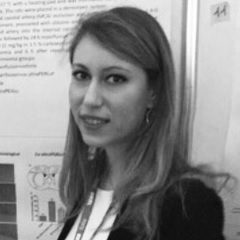Molecular Mechanisms of Cardiovascular Disease 2024
A special issue of International Journal of Molecular Sciences (ISSN 1422-0067). This special issue belongs to the section "Molecular Pathology, Diagnostics, and Therapeutics".
Deadline for manuscript submissions: 20 June 2024 | Viewed by 2232
Special Issue Editors
Interests: biochemistry; neuroinflammation; pain
Special Issues, Collections and Topics in MDPI journals
Interests: biochemistry; molecular mechanism; oxidative stress; endometriosis
Special Issues, Collections and Topics in MDPI journals
Special Issue Information
Dear Colleagues,
Nowadays, life expectancy has significantly increased, although several chronic and disabling diseases persist in the population. Despite improvements in prevention, diagnosis and treatment, many older adults suffer from cardiovascular diseases (CVDs) that are much more frequent in an older and fragile organism. CVD is a general term for conditions affecting the heart or blood vessels. It is usually associated with the accumulation of fatty deposits inside the arteries (atherosclerosis) and an increased risk of blood clots. This Special Issue aims to stimulate comprehensive research in this field. We will accept articles on the pathophysiology of myocardial ischemia and vascular injury, molecular basis, imaging, and cardioprotective strategies including pharmacological and non-pharmacological approaches.
Prof. Dr. Rosanna Di Paola
Dr. Roberta Fusco
Guest Editors
Manuscript Submission Information
Manuscripts should be submitted online at www.mdpi.com by registering and logging in to this website. Once you are registered, click here to go to the submission form. Manuscripts can be submitted until the deadline. All submissions that pass pre-check are peer-reviewed. Accepted papers will be published continuously in the journal (as soon as accepted) and will be listed together on the special issue website. Research articles, review articles as well as short communications are invited. For planned papers, a title and short abstract (about 100 words) can be sent to the Editorial Office for announcement on this website.
Submitted manuscripts should not have been published previously, nor be under consideration for publication elsewhere (except conference proceedings papers). All manuscripts are thoroughly refereed through a single-blind peer-review process. A guide for authors and other relevant information for submission of manuscripts is available on the Instructions for Authors page. International Journal of Molecular Sciences is an international peer-reviewed open access semimonthly journal published by MDPI.
Please visit the Instructions for Authors page before submitting a manuscript. There is an Article Processing Charge (APC) for publication in this open access journal. For details about the APC please see here. Submitted papers should be well formatted and use good English. Authors may use MDPI's English editing service prior to publication or during author revisions.
Keywords
- ischemia
- cardiovascular disease
- inflammation
- oxidative stress
- molecular mechanism







